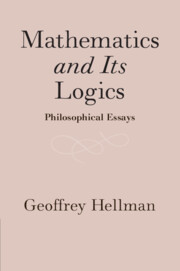Part I - Structuralism, Extendability, and Nominalism
Published online by Cambridge University Press: 26 January 2021
Summary

- Type
- Chapter
- Information
- Mathematics and Its LogicsPhilosophical Essays, pp. 17 - 100Publisher: Cambridge University PressPrint publication year: 2021



